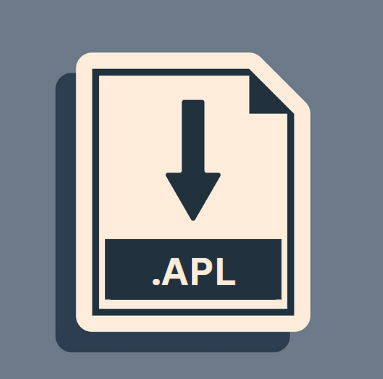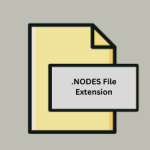.APL File Extension

Monkey's Audio Track Information File
| Developer | Matthew T. Ashland |
| Popularity | |
| Category | Audio Files |
| Format | .APL |
| Cross Platform | Update Soon |
What is an APL file?
APL (Audio Playlist) is a file extension used for audio playlist files. These files are commonly used to organize and manage audio tracks in various media players and applications.
APL files contain a list of references to audio files, allowing users to create customized playlists for their music or audio content.
More Information.
The APL file format was first introduced in the early 2000s as a part of the Windows Media Player. Its primary purpose was to create playlists that could be played in Windows Media Player.
It gained popularity and support from various media players, making it a versatile format for organizing and playing audio content.
Origin Of This File.
The APL file format was originally developed to simplify the organization and playback of audio files in multimedia applications.
It was designed to provide a standardized way to create and share playlists across different platforms and software. APL files have since become a widely accepted format for storing and sharing audio playlists.
File Structure Technical Specification.
APL files are typically simple text files that can be opened and edited with a basic text editor. They consist of a list of audio file references, each on a separate line.
These references can be local file paths or URLs pointing to online audio content. APL files may also include metadata and settings related to the playlist, such as the order of tracks and loop settings.
How to Convert the File?
Windows:
- Using Software: Install and use dedicated software for file conversion. Many popular options exist for various file formats. For example, to convert audio files, you can use software like Format Factory or Audacity.
- Online Converters: Use online file conversion websites or services like Online-Convert.com, Zamzar, or CloudConvert. Simply upload your file, select the desired output format, and start the conversion process.
- Built-in Features: Some Windows applications, like Microsoft Office, offer built-in file conversion options. For example, you can save a Word document as a PDF directly from Word.
Linux:
- Command Line: Linux provides powerful command-line tools for file conversion. For example, you can use
ffmpegfor audio and video conversions orconvertfor image format conversions. - GUI Applications: Linux also offers graphical user interface (GUI) applications like HandBrake for video conversions, Audacity for audio conversions, and GIMP for image format conversions.
Mac:
- Built-in Applications: Macs come with built-in applications like Preview (for images) and QuickTime Player (for videos) that allow you to convert certain file types. Simply open the file and choose “Export” or “Save As” to select the desired format.
- Third-Party Software: Install and use third-party software like HandBrake for video conversion or Audacity for audio conversion.
- Online Converters: Similar to Windows, you can use online file conversion services in your Mac’s web browser.
Android:
- Mobile Apps: Install file conversion apps from the Google Play Store, such as “File Converter” or “Media Converter.” These apps allow you to convert various file formats on your Android device.
- Cloud Services: You can also use cloud services like Google Drive or Dropbox to upload files and convert them using their built-in conversion features.
iOS:
- iOS Apps: Visit the App Store and search for file conversion apps specific to your needs. Apps like “Documents by Readdle” or “File Converter – By Online-Convert.com” can help you convert files on your iOS device.
- Cloud Services: Similar to Android, you can use cloud services like iCloud Drive to upload files and convert them using web-based tools.
Advantages And Disadvantages.
Advantages:
- Cross-Platform Compatibility: APL files can be used with various media players on different operating systems.
- Customization: Users can create and edit playlists to suit their preferences.
- Organization: APL files help organize audio content efficiently.
Disadvantages:
- Limited Features: APL files may lack advanced features compared to proprietary playlist formats.
- Compatibility Issues: Some media players may not fully support APL files, leading to playback issues.
How to Open APL?
Open In Windows
- Documents (e.g., Word, PDF): Double-click the file, and it should open in the default application associated with that file type (e.g., Microsoft Word for .docx, Adobe Acrobat Reader for .pdf).
- Media (e.g., Images, Videos, Audio): Double-click the file, and it will open in the default media player or image viewer.
Open In Linux
- Documents: Use a compatible application like LibreOffice for documents or a PDF viewer like Evince.
- Media: Use media players like VLC for videos and Audacious for audio.
Open In MAC
- Documents: Double-click the file to open it with the default application (e.g., Pages for .pages documents).
- Media: Use the built-in QuickTime Player for video and audio files.
Open In Android
- Documents: Install an office suite like Microsoft Office, Google Docs, or WPS Office to open and edit documents. For PDFs, you can use Adobe Acrobat Reader.
- Media: Use built-in apps like Gallery for images and Google Photos for videos. Install media players like VLC for additional format support.
Open In IOS
- Documents: iOS supports various document formats natively, such as PDF, Word, and Excel. Files can be opened using Apple’s pre-installed apps like Pages, Numbers, or by using third-party apps from the App Store.
- Media: Use built-in apps like Photos for images and Videos for videos. Third-party apps like VLC can be used for additional format support.
Open in Others
The method for opening files on other platforms may vary widely depending on the specific operating system and file type. In most cases, you can follow these general guidelines:
- Identify the file type by looking at the file extension (e.g., .txt for text, .jpg for images, .mp4 for videos).
- Install or use a compatible application or software that supports that file type.
- Use the application’s “Open” or “Import” function to access and view the file.













